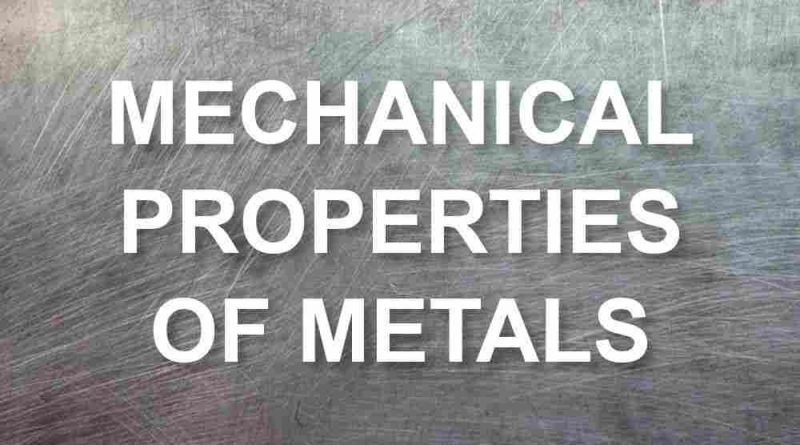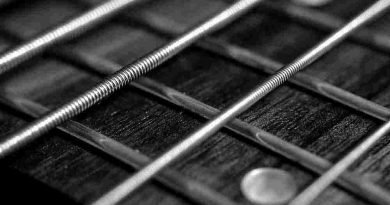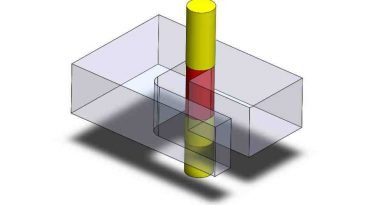Mechanical Properties of Metals
The mechanical properties of metals are used to determine the characteristics of metals for various applications. The mechanical properties of metals are considered while designing machine components to perform well during its application.
While designing a product or machine component you need to select a metal to create a product. For selecting a proper metal which is suitable for the product or machine component, you need to determine or understand the mechanical properties of selected metals.
Here are the mechanical properties of metals are as follows,
Strength:
The ability of metal to sustain the load without breaking or rupture is known as strength. It is the mechanical property of metal, which provides the resistance to an external force or it has the ability to withstand various loads without deformation.
Elasticity:
The property of metal in which a deformation is done under the application of load and it vanished after removing the load is called as elasticity. The components are usually designed with suitable elasticity for not deformed when it is subjected to loads. Most of the metals have good elasticity property such as heat-treated coils and springs made of aluminum, steel, copper, etc.
Plasticity:
The property of metal in which a deformation is done under the application of load but the deformation does not vanish is called as plasticity. The plasticity of metals is an opposite of elasticity. Plasticity used in various mechanical processes such as shaping, forming and various heat treatment processes.
Ductility:
The property of metal due to which the wires can be drawn under the tensile force is called as ductility. The metals which are used for production of machine tools are need ductility property. The ductility property of metal is an opposite to brittleness. The metals such as Copper, Silver, Gold, Aluminum, etc. are good examples of ductility property.
Malleability:
The property of metal due to which the thin sheets can be drawn by rolling or hammering is called as malleability. The metals which are use while manufacturing of machine components have need malleability because it changes size and shape during manufacturing. The metals such as Copper, Silver, Gold, Aluminum, etc. are a good example of malleability property.
Weldability:
The property of metal in which the two similar or dissimilar metals are joined together by fusion with or without the help of application of pressure or filler metal is called as weldability. The metals such as iron, copper, aluminum, steel, etc. are a good examples of weldability property.
Brittleness:
The property of metal due to which it breaks into small pieces under the application of ultimate load without prior indication is called as brittleness. The metals such as cast iron has good brittleness property. It is the property of metal in which a metal can bend instead of bend. The brittle metals have high compressive strength and low tensile strength.
Fatigue:
The property of metal to resist the repeating load before it rupture is known as fatigue. The machine tool components are designed such as turbines, high speed aero engines need a fatigue property to give a long service under cyclic loads.
Hardness:
The property of metal to resist abrasion, scratching, penetration or wear is called as hardness. The hardness is the ability of metal to resist penetration and wear by another metal. It has the ability to resist, penetration and abrasion. The examples of hardness property such as Brinell hardness, Rockwell hardness, Vickers hardness, etc.
Toughness:
The property of metal to absorb the shock energy, this capacity is called as toughness. It is also known as impact strength. Toughness is a combination of high strength and medium ductility. A tough metal such as cold chisel and springs are one of the examples of toughness property.
Stiffness:
The ability of metal to resist the deformation under the load is called as stiffness. It is also known as rigidity. The stiffness plays an important role as a property of metals. Stiffness is a resistance of metal to elastic deformation.
Creep:
When a machine component is subjected to a constant load at high temperature for long time it shows permanent deformation is called as creep. The simplest type of creep deformation is viscous flow. Metals are generally exhibiting creep at high temperature.
Resilience:
The property of metal to absorb the energy and to resist shock and impact loads is called as resilience. Examples: Springs, Toys, Wrist watches, etc.
Proof Resilience:
The maximum strain energy stored in the member is known as proof resilience.
Modulus of Resilience:
The maximum strain energy stored per unit volume is known as modulus of resilience.
Factor of Safety:
Factor of safety is defined as maximum stress to working stress or design stress. The selection of factor of safety depends upon number of considerations such as material, type of stress, mode of manufacturing.





